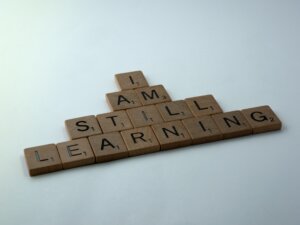Best Practices for Effective Training with Learners
Sections of This Topic Include
- Preparation for Implementing Your Training Plan
- Key Considerations During Implementation
- Wise Advice for Any Trainer
- Additional Resources to Guide Implementation of Your Training Plan
Also, consider
Related Library Topics
Learn More in the Library’s Blogs Related to Implementing Training Plans
In addition to the articles on this current page, also see the following blogs that have posts related to Implementing Training Plans. Scan down the blog’s page to see various posts. Also, see the section “Recent Blog Posts” in the sidebar of the blog or click on “Next” near the bottom of a post in the blog. The blog also links to numerous free related resources.
- Library’s Career Management Blog
- Library’s Human Resources Blog
- Library’s Leadership Blog
- Library’s Supervision Blog
- Library’s Training and Development Blog
Preparation for Implementing Your Training Plan
The purpose of the implementation phase is to implement the training plan that you designed and developed in earlier phases of the systematic approach to training.
This is when the learners undertake the activities of learning, and produce various tangible results that can be referenced as a means to evaluate learners’ progress toward achieving the learning objectives, and evaluation occurs not only of the results produced by learners but also of the activities of implementation to ensure those activities themselves are high-quality. If the previous phases of assessment, design, and development we done well, then this implementation phase should go quite smoothly.
- Before progressing through the guidelines on this topic, the reader would benefit from first reviewing the information about formal and systematic training, especially the ADDIE model, at Formal Training Processes — Instructional Systems Design (ISD) and ADDIE.
- Then scan the contents of the third phase of the ADDIE model systematic planning of training and developing Training Activities and Materials. (This implementation phase is the fourth phase of the ADDIE model.)
- Also, note that there is a document, Complete Guidelines to Design Your Training Plan, that condenses the guidelines from the various topics about training plans to guide you in developing a training plan. That document also provides a Framework to Design Your Training Plan that you can use to document the various aspects of your plan
Key Considerations During Implementation
Are Learners Participating in the Activities?
Closely monitor the attendance and participation of the learners. It’s tempting to forgive low attendance and participation among learners who are extremely busy. If you are confronted with that situation, then reflect on how important the training really is. Regardless, as soon as you notice low attendance or participation, you should mention it to the learners.
That short communication alone is often sufficient to reinforce the importance of their engagement in the training. Also, you might learn what you didn’t know that you didn’t know, for example, that the activities and materials are not nearly as suitable to the learners as you might have thought.
Are You Evaluating the Quality of the Activities and Achievement of Objectives?
When you designed the learning objectives, you also identified certain tangible results that learners would produce, so those results could be evaluated. Are you referencing those results? What is their quality? Are you seeing any progress toward achieving the overall training goals that were identified during the first phase — the needs assessment phase — of the planning of systematic training?
What comments and other feedback are you getting from the learners that will be useful in ensuring a high-quality training program? (See Evaluating Training and Results — ROI of Training.)
What Changes Might Be Needed to the Learning Activities and Materials?
Training plans are changed much more frequently than most people realize. Plans can be changed, as long as they’re changed in a systematic approach, for example, if the version of the plan is updated, the impact of the change is considered for each phase of the planning, and the changed plan is distributed to all relevant participants.
Wise Advice for Any Trainer
(This Library has a link to a vast amount of tips and tools for teachers and trainers. See Tips and Tools for Trainers and Teachers. However, this author believes the following advice is fundamental to any of the tips in the articles referenced from that link. The advice is excerpted from Jack Shaw’s blog post “Make Teaching An Affair to Remember”.)
My biggest concern for trainers is that, for the most part, they are more focused on the process of training according to the trainer’s guide, than on communicating with the trainees or audience. It’s a little like “Which came first?” The basics of public speaking apply, taking into account the audience, the subject
and the trainer/presenter/speaker, etc.
I’m not saying make a speech or lecture instead. Do a lecture, if that’s appropriate. Should you follow the “plan,” know that even the introduction of the training itself, the transitions and instructions to carry out the activities, and the overall purpose and motivation for the training must be communicated effectively?
Why do some students love their teachers? Because they’re young and don’t know any better? No, because the teachers are charismatic. They’re fun. They’re themselves and the students know that. The teachers care about the students and what they get out of a lesson. It should be no different with training. And trainers, too.
Know Your Audience, Know Your Subject and Know Yourself
Sounds simplistic and maybe that is the beauty of it. Knowing the audience is primary to any training needs assessment, environment, implementation, and plans. The same goes for the subject–tailored, of course, to your audience.
Then, the biggest factor, often ignored by managers and training staff: is the assignment of a trainer who can hold and engage the audience with the subject matter.
To some trainers, even though they “know” training and development, getting up in front of the group is still their biggest fear–their “mission impossible.”
To some trainers, even though they know training and all the requisite tools, public speaking is still their biggest fear, their “mission impossible” as it is for most people. That is the reason some trainers fall back to the etched-in-stone training process. Sure, the program takes into account how people learn and what techniques do that best, but the bottom line for trainees is that they have to care.
The only way to make them care is to have someone who can grab their attention, make the training meaningful, and communicate the message (the subject effectively). That is the job of the trainer or facilitator of training. Either way, we’re going to make that “mission impossible” “an affair to remember.”
For those trainers or facilitators who need help in owning the stage and being more confident, I won’t just say, “Practice, practice, practice.” Practice is important, but there are other techniques as well. Actors know how to be comfortable in their own skins as well as others. The trick is to get the right help to identify who you are, and to use that knowledge effectively.
Once You Know Who You Are and Why You Belong … the Rest is Conversation — the Training Module, Made Easy
Use all the personality tools you own, and the information you feel critical
to communicate and connect with the audience. “Owning” the moment
and the stage is key to alleviating public speaking/training fears. This is
where the knowing yourself comes in. Everyone has a unique personality and I
encourage them to use it. Not everyone is a dance-a-minute on the stage a
joke teller or a witty soul. But I wouldn’t tell a cowboy about to make
a speech he had to take his hat off–especially if that is not who he is.
In essence, be yourself and use what is unique about you as you would in talking
with friends. Be a person. That will help the moment feel more natural–more
like a conversation, which isn’t fearful.
Communication Considerations for Trainers
- How do you get your audience’s attention and maintain it?
- Recognize different training groups, different approaches, and different sizes
of training — one size may not fit all. - How do you make the trainees remember what you said? In public speaking,
we use storytelling and humor among other things. - How do you influence your audience?
- Know what you need to realize the charisma you need to become a dynamic
and respected communicator or facilitator of training? A hint. It’s
already in there. In you.
Effective Communication Couldn’t Be More Important in Training
No one should deny our purpose is for our trainees to absorb our subject matter
and commit to using it. Even if you have a product that sells itself you still
have to get someone to pay attention to it to know they even want it. Basic
communication means we have information to convey and we need our audience to
“act” on that information (even if it is just to remember it) or
we wouldn’t be there in the first place.
Communication is about sending and receiving information. Actors are taught
acting and reacting–virtually the same give and take in a speaking or
training environment. Acting is about audience perception and our ability to
influence that perception. To get others to listen, to remember, to change their
minds or attitudes is communication.
Actors aren’t the only ones who need to know their audience, their subjects,
and themselves, trainers should, too, if they want their training sessions to
be “affairs to remember.” Those results are the best kind, after
all.
The most efficient training is the best-communicated training.
Additional Resources to Guide Implementation
of Your Training Plan
Tips and Tools
for Trainers and Teachers.
Overview
of implementing training
Ten Tips to Make Training and Development Work
Teaching-effectiveness
program
Effective Use of Mobile Apps – New Technology in Training
Note that the implementation phase sometimes involves changes in a team, process
or the organization. Therefore, it’s important that participants have some understanding
about how to successfully guide change in organizations. See
Guidelines, Methods, and Resources for Organizational Change Agents
Learn More in the Library’s Blogs Related to
this Topic
In addition to the articles on this current page, see
the following blogs that have posts related to this topic. Scan
down the blog’s page to see various posts. Also, see the section
“Recent Blog Posts” in the
sidebar of the blog or click on “next”
near the bottom of a post in the blog. The blog also links to
numerous free related resources.
Library’s
Career Management Blog
Library’s
Human Resources Blog
Library’s
Leadership Blog
Library’s Supervision Blog
Library’s
Training and Development Blog
Go to the main Training
and Development page.
For the Category of Training and Development:
To round out your knowledge of this Library topic, you may want to review some related topics, available from the link below. Each of the related topics includes free, online resources.
Also, scan the Recommended Books listed below. They have been selected for their relevance and highly practical nature.
 Sections of this topic
Sections of this topic
















